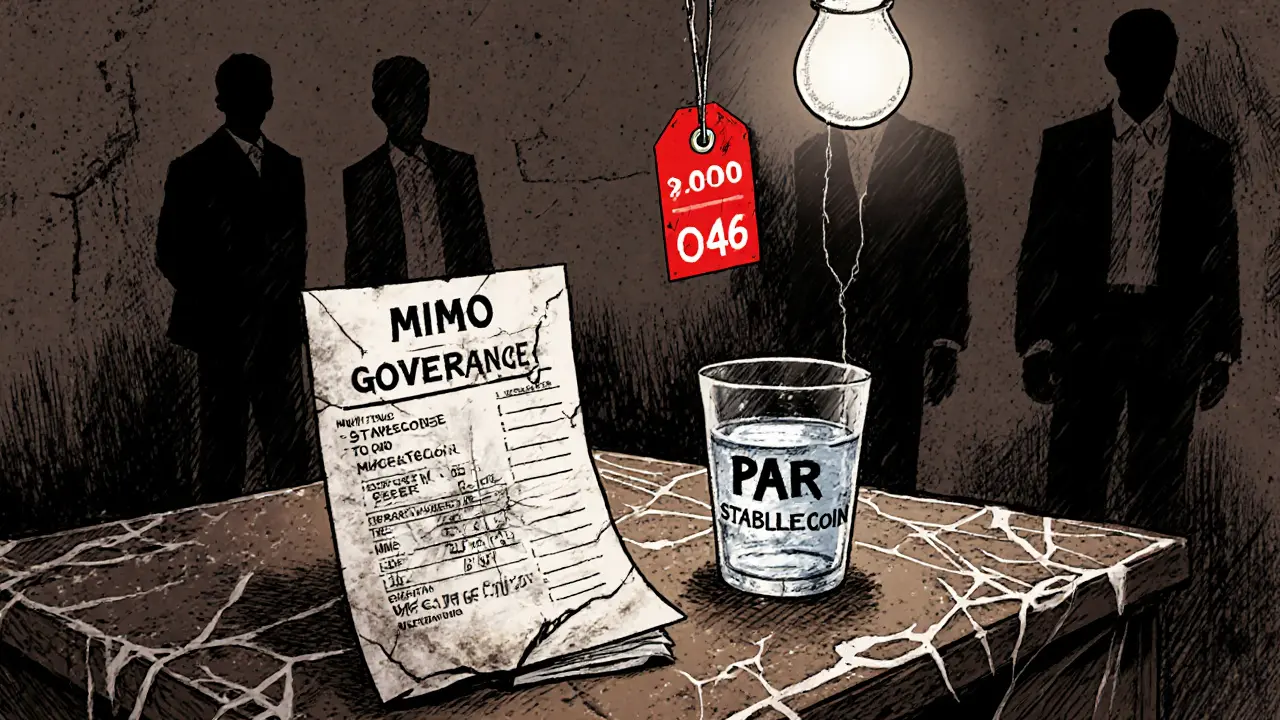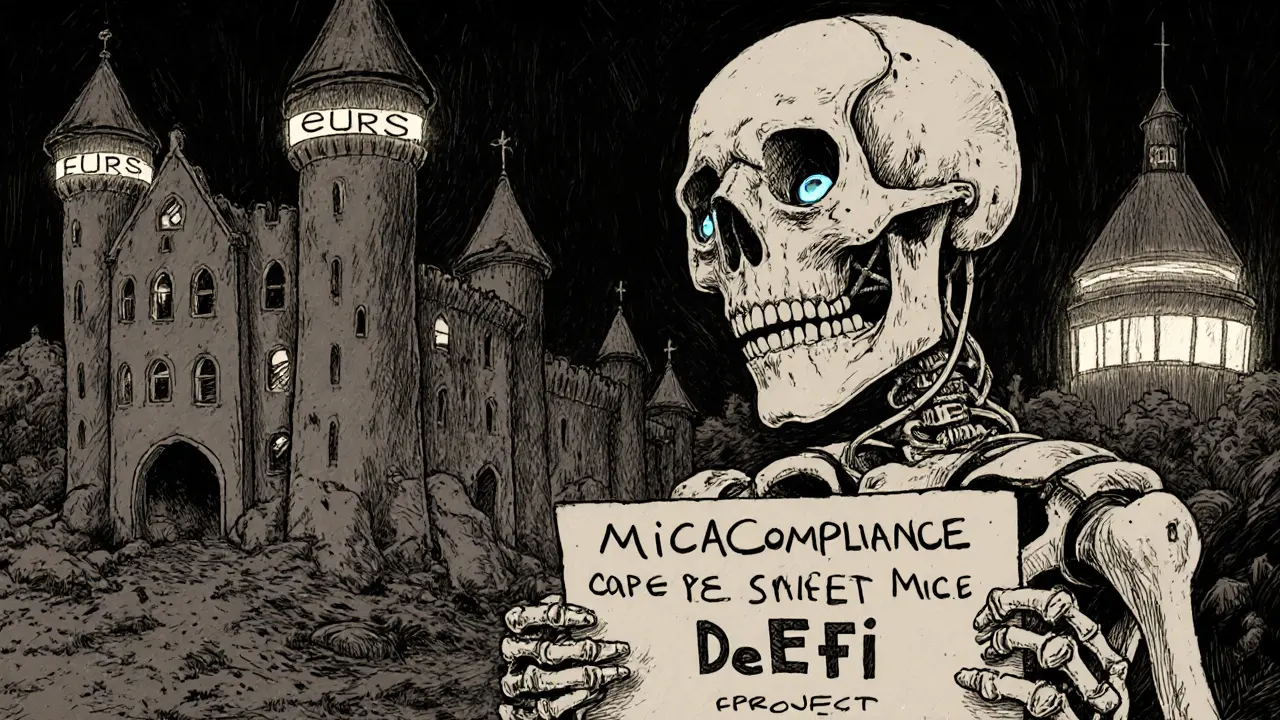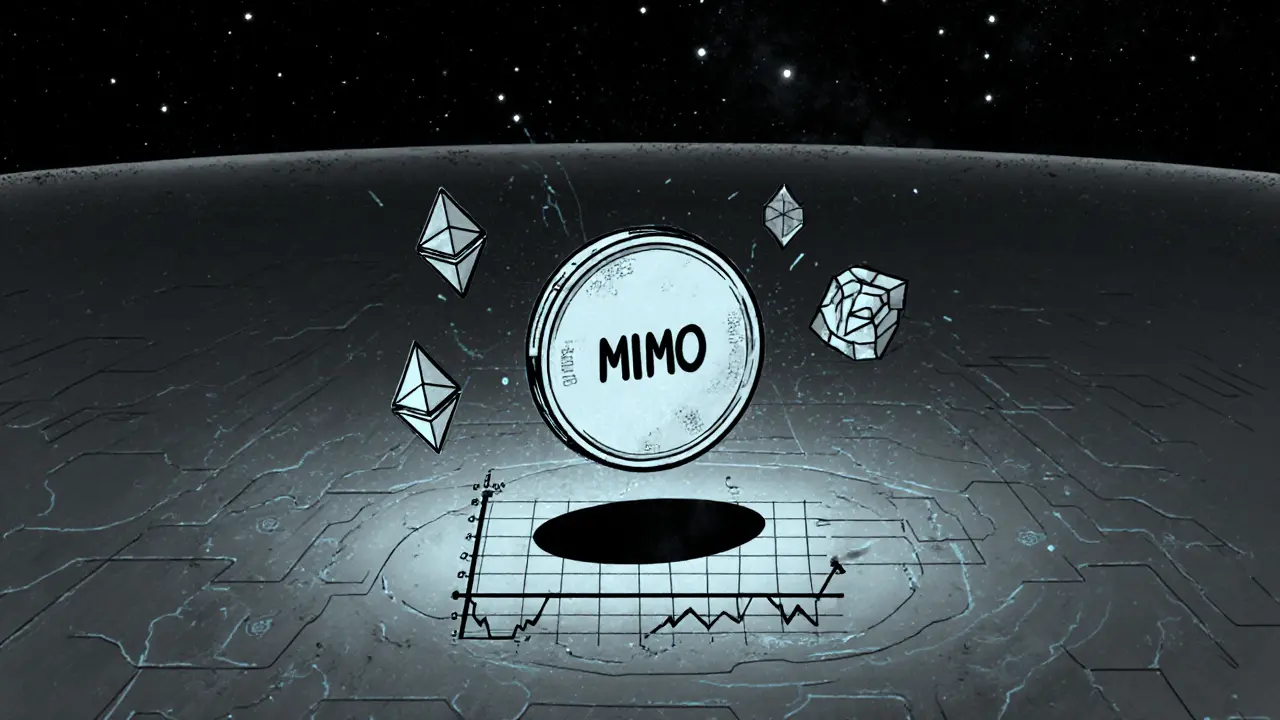MIMO Value Calculator
MIMO Value Calculator
Calculate the current value of your MIMO tokens based on real market data and projections from the article.
Most people hear about crypto tokens like Bitcoin or Ethereum and assume they’re all built to last. But what about the ones that barely move? Meet MIMO - the governance token behind the Parallel Protocol, a DeFi project trying to bring euro-pegged stablecoins to decentralized finance. It’s not flashy. It doesn’t have a big team. And right now, it’s barely trading. If you’re wondering whether MIMO is worth your time, here’s the real picture - no hype, no fluff.
What MIMO Actually Does
MIMO isn’t a currency you spend. It’s a voting tool. Think of it like a shareholder vote in a company, but on a blockchain. Holders of MIMO can propose and vote on changes to the Parallel Protocol - things like interest rates, collateral rules, or even how the treasury spends money. The whole point? To manage PAR, a stablecoin that’s pegged to the euro.
Unlike DAI (which tracks the US dollar), PAR is designed for people in Europe who want to avoid currency swings without using banks. That’s the niche. And MIMO is the engine that runs it. You don’t just hold MIMO - you lock it up. The longer you lock it, the more voting power you get. That’s the core mechanic. It’s not unique, but it’s intentional.
Where MIMO Lives (And Where It Doesn’t)
MIMO runs on three blockchains: Ethereum, Polygon, and Fantom. That’s not nothing. Many small tokens stick to one chain and get stuck. MIMO spread out - but that didn’t help. Despite being available across multiple networks, it’s listed on barely one exchange, according to CoinLore. Coinbase shows zero trading volume over 24 hours. That’s not a glitch. That’s abandonment.
Compare that to MakerDAO’s MKR, which trades millions daily, or even smaller tokens like RGT with hundreds of millions in volume. MIMO’s market cap hovers around $670,000 - less than the cost of a modest apartment in Berlin. It ranks #2820 by market cap. There are over 2,800 crypto tokens ahead of it. Most of them have active communities. MIMO doesn’t.
The Code Is Copied - And That’s a Red Flag
Here’s the hardest truth: every line of MIMO’s governance code was copied from another project. Stack Money’s analysis confirmed 100% of its repositories are forks. That’s not innovation. That’s replication. There’s no original tech here. No novel smart contracts. No breakthrough in stability mechanisms. Just a rebrand of existing DeFi patterns.
That’s not illegal. Many projects start this way. But when a project doesn’t improve on what it copied - and doesn’t even update its docs or fix bugs - it becomes a ghost. No GitHub commits in months. No Discord. No Telegram. No whitepaper you can find. That’s not a startup. That’s a skeleton.

Price Crash: From Price Crash: From $0.35 to $0.00046
.35 to Price Crash: From $0.35 to $0.00046
.00046
MIMO hit an all-time high of $0.35. Today, it trades at $0.000462. That’s a 99.73% drop. From one year ago, it’s down 90.66%. That’s not market correction. That’s collapse.
Why? Because nobody’s buying. Nobody’s using. And nobody believes in it anymore. Coinlore’s data shows only 19 green days in the last 30 - meaning the price went up less than half the time. The Fear & Greed Index says “Greed,” but that’s a glitch. There’s no greed here - just bots spinning wheels on a dead chain.
Why It Still Exists (And Who Might Care)
Some say MIMO has a “long-term vision.” SwissBorg Academy notes it’s trying to bridge traditional European finance with DeFi. That’s a noble goal. But vision doesn’t pay bills. It doesn’t bring users. And it doesn’t replace liquidity.
The only people who might still use MIMO are:
- People who bought it early and are holding for a miracle
- Researchers studying failed DeFi experiments
- Curious devs who want to see how a fork dies
There are no real users minting PAR. No businesses accepting it. No wallets integrating it. Even in Europe - where the euro peg makes sense - no one’s using it. STASIS’s EURS and Tether’s eURT are miles ahead in adoption, compliance, and trust. MIMO doesn’t even compete. It’s a footnote.

Regulation Is Coming - And MIMO Isn’t Ready
As of June 2025, the EU’s MiCA regulations are fully in force. That means any euro-pegged stablecoin must meet strict transparency, audit, and reserve requirements. PAR, backed by MIMO, has none of that. No public audits. No legal entity. No regulatory filings. That’s not just risky - it’s legally dangerous.
Compare that to EURS, which is audited monthly and registered with Luxembourg’s financial regulator. Or eURT, which is backed by Tether’s massive reserves. MIMO? No one knows where the euro backing is. No one knows who’s responsible. That’s not DeFi. That’s gambling with someone else’s money.
Is MIMO Worth Anything?
Here’s the brutal answer: no, not really.
If you’re looking to earn yield, invest, or participate in governance - look elsewhere. MKR, COMP, UNI - they’re active. They have teams. They have users. They have roadmaps. MIMO has a price chart that looks like a heart monitor flatlining.
Even if you believe in the euro-pegged DeFi idea, MIMO isn’t the way. The technology is copied. The community is gone. The liquidity is zero. The regulatory risk is high. And the price? It’s falling faster than it’s rising.
This isn’t a hidden gem. It’s a graveyard.
What Happens Next?
Coinlore predicts MIMO will drop another 50% by November 2025. That’s not a forecast - it’s an expectation. There are no announcements. No new features. No partnerships. No team updates. Just silence.
Without active development, MIMO will keep losing value. Eventually, exchanges will delist it. Wallets will stop supporting it. And the last few holders will be left with a token that can’t be sold, can’t be used, and can’t be voted with - because no one’s left to vote with.
It’s not a question of if MIMO fails. It’s a question of when the last person gives up.
